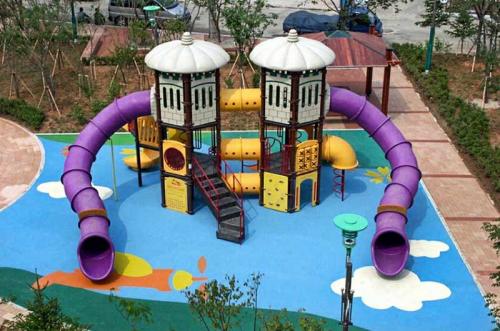Playground Design Important Factors to Consider

Playgrounds are an essential aspect of everyday life with a child, whether at school or in the park or even in your own home, there are several important factors to consider when it comes to the construction of playgrounds.
Playground specialization
In some cases, playgrounds can cater to specific needs. Will, it merely serves as entertainment and physical activity for children, or will problem-solving ability and sensory stimulation also be necessary. Some specialization can be seen with playgrounds offering wall climbing facilities or water activities. The specialization will affect the type of equipment added to the playground and will naturally tie in with the age group of the children using it.
User demographic and location
Since playgrounds are meant to be fun and to provide a physical and mental challenge for children, their setup needs to take the ages of the children using it into consideration. Naturally, if the structure and layout are too complicated or too high, it could be a danger for smaller children. Alternatively, if a playground is not challenging enough for the child's physical and mental development level, they may find it annoying.
Generally, playground structures' height and complexity tend to be designed to suit the child's average age. Younger children require structures that are easier to climb and descend and lower to the ground. Lots of safety bars and grips also provide extra safety for children who are still gaining their confidence in balancing and climbing. Sensory stimulating areas such as sandpits are even more important for younger children.
Besides climbing, swinging, and sliding facilities, older children benefit more from problem-solving activities such as grids and labyrinths as well as trampolines that challenge their balance.
Naturally, the layout of a playground will also depend on its location and the diversity of child demographic attracted to it. Parks may focus more on equipment catering for variety between age groups compared to diversity within an age group.
Capacity and equipment
Playground equipment type, diversity, and the number will also play a part depending on how many children it should be able to accommodate at one time. For example, if it is a class of 40 children, four swings may be enough, while at a park where the children's arrival may be staggered in time, two swings will be enough.
The durability and strength of the structures will also be influenced by this, as will be the material arrangements are made from. Commonly playground equipment is constructed either from plastic or recycled plastic for smaller children and metal or wood for older children.
General considerations
Some general considerations to take into account is the type of material that the equipment will be made of and the associated maintenance that will be needed on these structures. Proper security checks and support should be scheduled regularly.
The total surface covering should be non-slip in case of rain and drainage should be adequate to prevent damming of water. If sand or grass coverings are used, their proper cleaning and care should also be considered.
Indoor playgrounds commonly have softened rubberized flooring or even artificial grass.
Lastly, proper supervision and rules should be arranged for each playground to ensure maximum safety for all children.
Advertise on APSense
This advertising space is available.
Post Your Ad Here
Post Your Ad Here
Comments